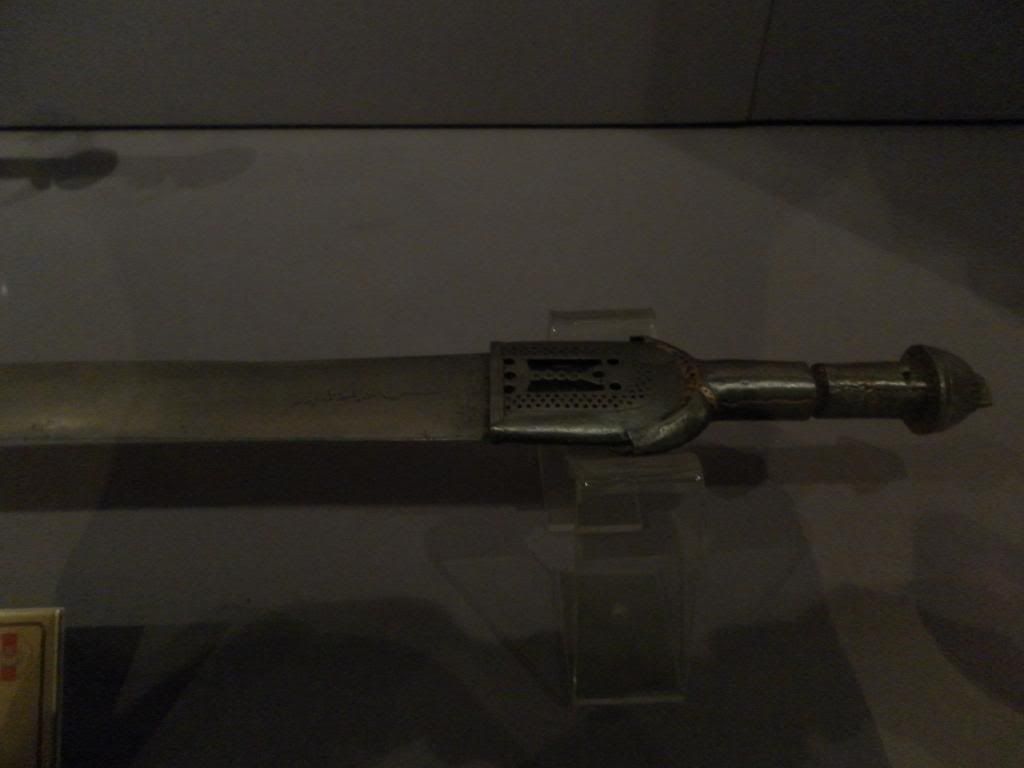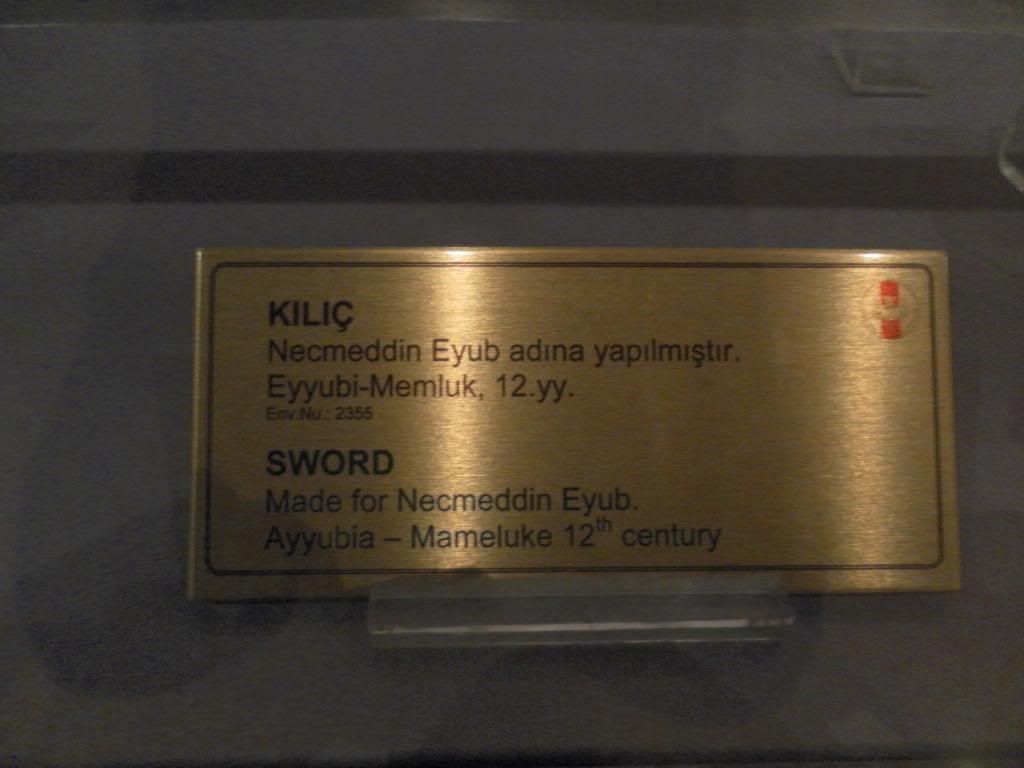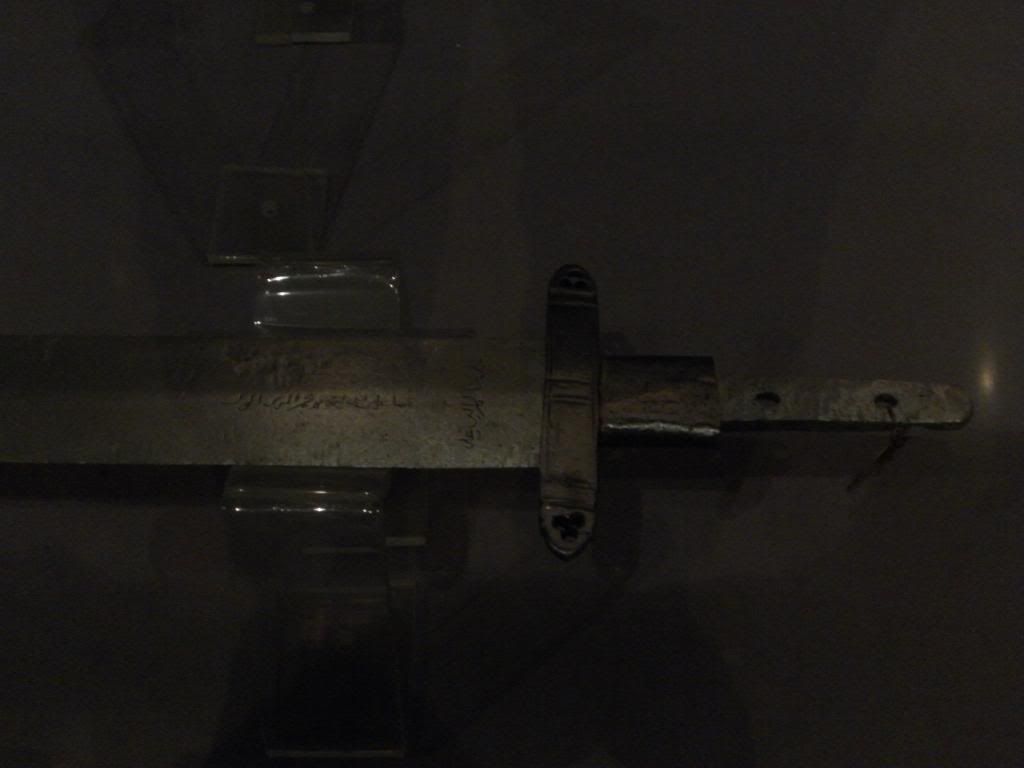
 |
|
|
|
|
#1 |
|
Member
Join Date: Oct 2007
Posts: 2,818
|
Would someone who is savy with creating a video for youtube please write me privately.
Anyone who is savy in test cutting too would be helpful. With thanks |
|
|
|
|
#2 |
|
Member
Join Date: Aug 2007
Location: CHRISTCHURCH NEW ZEALAND
Posts: 2,789
|
Originally posted at #76 of the Forts and Cannon of Oman thread which is now closed, Ibrahiim has stated that the so called Dancing sword was "brought on and expanded into the population from the palace guards".
My question is this: WHY WOULD YOU GUARD A PALACE WITH A DANCING SWORD? A sensible reply would be appreciated. |
|
|
|
|
#3 |
|
Vikingsword Staff
Join Date: Dec 2004
Location: The Aussie Bush
Posts: 4,399
|
Before this thread gets closed down as well, let me say that I interpret most of Ibrahiim's comments to indicate that certain swords have assumed ceremonial or ritual status rather than military status.
I think we can readily find examples in western culture where this is now the case. For example, the British monarch has the Horse Guard. These are mounted troopers who carry swords (and maybe lances as well at times--I'm not sure about that). In any case, these are ceremonial troops whose swords (sharpened or not) would be completely ineffective in protecting the Royal Family from a modern attack with automatic weapons. The Horse Guard adds pageantry to royal activities and reminds the British of past traditions and former "glory." I think this might be what Ibrahiim is getting at when he speaks of "heraldry." As far as dance swords, I am reminded of Scottish sword dancing where former weapons, now ceremonial, are still used as props in traditional dancing performances. So I'm having no problem understanding much of what Ibrahiim is saying here. It's not clear to me why there is so much heated discussion about this topic. What is clear, though, is that the Moderators will shut down this thread as well if it gets out of hand. Personally, I would like to hear more sword discussion on this topic because it is an area about which I know very little. Ian. |
|
|
|
|
#4 | |
|
Member
Join Date: Jul 2006
Location: Buraimi Oman, on the border with the UAE
Posts: 4,408
|
Quote:
A note on heraldry as it is likely that the Heraldic Society would never accept the terminology but it fits in general; The current Dynasty commenced very roughly in about 1744...and the Dancing Sword was concocted at that time or shortly therafter, thus, I term it Heraldic~Dynastic. To salute the monarch and conduct the traditions or Funun...until today. It had to be extremely flexible but was also razor sharp and spatulate tipped in honour of the forefathers who went into battle with another weapon upon which it was largely designed; The Omani Battle Sword. See thread on that please. I have compared the Dancing Sword with the Omani Batle Sword but the new part of the design was the long Omani Hilt taken from the Omani curved Kattara (see that thread please) which was a slave captains sword and Merchants Sword acting both as a badge of office and a defensive weapon/punishment item. I have searched high and low ... but no evidence exists anywhere of any battle in which the dancing sword may have been used and when you see the blade it is pretty clear why... It is not a battle blade and is weak and very flexible... thus excellent as a safe sword to buzz at march pasts and pageantry. The killer sword in the Oman armoury has always been the Omani Battle Sword which could take a mans leg off but is stiff and configured differently in the hilt... The late Anthony North expounded on the now well known theory of retaining a weapon that worked... That is the case here... The ancient Old Omani Battle Sword is honoured from about the mid 19th C with a replacement Royal Hilt which can be seen today~ even carried by the Ruler although any man can wear it...And most of them do! though at the time when it was inaugurated the population was by comparison much smaller and it permeated across the population rather than exploded but would have spread in popularity steadily..via the Palace and religious guards... The very important functions handed over at the beginning of this Dynasty were from the Old Omani Battle Sword to the new dancing sword...including the buckler shield; as I say... in honour and for Pageant and Salutations...but not the fighting function. Since 1970 masses of Ethiopian straight stiff blades have been expertly rehilted on Omani Longhilts and Omani Scabbards in Muttrah Souk Muscat having been imported via Yemen from Ethiopia...often made in Germany. These are not original Omani fighting swords but classed as Tourist items. That is the point of the discussion. Regards, Ibrahiim al Balooshi. |
|
|
|
|
|
#5 |
|
Member
Join Date: Mar 2010
Location: Olomouc
Posts: 1,717
|
The example I'd be interested to see which I don't think I have yet in this thread or the other discussions about this type, would be a dated late 18th or early 19th century dance/parade sword. I've seen plenty of the more recent ones with flexible blades, but not a dated older one.

|
|
|
|
|
#6 |
|
Member
Join Date: Sep 2013
Posts: 79
|
Here are pictures of two swords from İstanbul Military Museum. Both are signed and there are no questions and doubts about their origin and age. I believe this will give new clues about the subject at hand(I am sorry that photos are a little dark):
First one is a Memlük sword from 13th century:    Second one is an Eyyubi sword from 12th century; made for Necmeddin Eyyub:    I know two little about the topic at hand(and I thank both participants of the discussion, I learned a lot from this topic) but to my uneducated eyes, these sword look very very similar to "dancing swords" mentioned here. They even have rounded tips. (I also want to add Indian straight sword Khanda also has rounded tips yet they are battle swords) |
|
|
|
|
#7 |
|
Member
Join Date: Jul 2006
Location: Buraimi Oman, on the border with the UAE
Posts: 4,408
|
Quote:
Salaams Sancar, Please have a look at http://www.vikingsword.com/vb/showth...ilitary+museum at post #1 and #14. Your swords are related to the museum pictures shown at #1 and I believe also a relative of the Wallace collection sword at #14...There are also some backyard rehilts of Ethiopian swords done in Sanaa that have a roughly copied hilt similar to those.. Regards, Ibrahiim al Balooshi. |
|
|
|
|
#8 | |
|
Member
Join Date: Jul 2006
Location: Buraimi Oman, on the border with the UAE
Posts: 4,408
|
Quote:
Yes you are right... they are in somewhat short supply but I am looking and one will surely turn up. It would be interesting if I could find the initial commissioning document but no such detail appears to exist...and it is quite hard to determine the precise Ruler who kicked off the dancing sword trend but I tend to favour the first since he was also an IMAM...Having said that it could be that the item did not start until the advent of Said bin Sultan in 1804. See http://en.wikipedia.org/wiki/Said_bi...uscat_and_Oman Ibrahiim al Balooshi. |
|
|
|
|
|
#9 | |
|
Member
Join Date: Mar 2010
Location: Olomouc
Posts: 1,717
|
Quote:

|
|
|
|
|
|
#10 |
|
Member
Join Date: Sep 2013
Posts: 79
|
Ibrahim, I'd like to adsk about the last photo with two swords in your last post. Are they also "dancing swords"? Are the form of hilts and blades of those swords specific only to the dancing swords? Because I remember seeing the exact same shaped sword in Istanbul Military Museum. It was a Memlük sword; belonged to a Memlük sultan if I remember correctly and it was definitely for battle.
I'm desperately searching for photos right now. But I am 100% positive it was very very similar to the swords in your photo. |
|
|
|
|
#11 | |
|
Member
Join Date: Dec 2004
Posts: 1,712
|
Quote:
I think the point here that people are arguing about is Ibrahim states that all solid bladed straight kattara with the typical Omani style hilt. {Not the all metal one.} are fake. {He believes only the curved ones ar for fighting.} That all swords of that type should have very bendy blades & just be used for dancing. {since around 1774!} But the modern copies he shows & the information he pronounces as gospel, that comes from the fakers of modern day marriages look like the copies they are. But to malign every stiff bladed kattara ever sold or collected in the west {excepting the all metal hilts.} as fake, without substantiating it is wrong. To say non of these swords were ever used in battle is wrong. To say the sword was not very important unlike spears or guns after C.1744 is also wrong. IMHO Spiral |
|
|
|
|
|
#12 | |
|
Member
Join Date: Jul 2006
Location: Buraimi Oman, on the border with the UAE
Posts: 4,408
|
Quote:
Please note;In order to help you differentiate the 3 swords I have placed above the pictures at #135. There's~ 1.The Old Omani Battle Sword. Battle Sword. Straight and stiff. 2.The Curved Kattara. Merchant and Slavers Sword. Curved. Quite rigid.. 3.The Omani Dancing Sword. Pageants and Salutations ...The Dynastic Item...Dynasty started 1744 but sword would have taken time to promote perhaps 15 years. Straight and very flexible. Ibrahiim al Balooshi. |
|
|
|
|
|
#13 | |
|
Member
Join Date: Dec 2004
Posts: 1,712
|
Quote:
That post was for the moderators Ibrhaim, but as you wish to engage myself, {although you ignored what I said & just posted the same stuff yet again, as if.. I failed to understand.  So to reiterate. I need no help to differentiate Ibrahim.  I think you do... You missed out numbers 4. & 5.  4. The straight bladed fighting Kattara 5. The straight bladed kattara fake made by dodgy Omani dealers in the souk. Hope that helps clarify it for you? Spiral |
|
|
|
|
|
#14 | |
|
Member
Join Date: Jul 2006
Location: Buraimi Oman, on the border with the UAE
Posts: 4,408
|
Quote:
Thank you for the question... I prepared the answer yesterday... As you know Palace Guards or Askeris were armed substantially with Khanjar, Spear and the long gun... The Abu Futtilla. The dancing sword when carried (and terrs) were ceremonial . A large slice of a Guards daily program would have been to do with pageantry... and salutation...actually not altogether removed from ceremonial guard duty today. Pageantry includes the mock fight which is incorporated into the Funun...and which would form a good workout as each man took his turn... Regards, Ibrahiim al Balooshi. Last edited by Ibrahiim al Balooshi; 15th July 2014 at 08:31 AM. |
|
|
|
 |
|
|